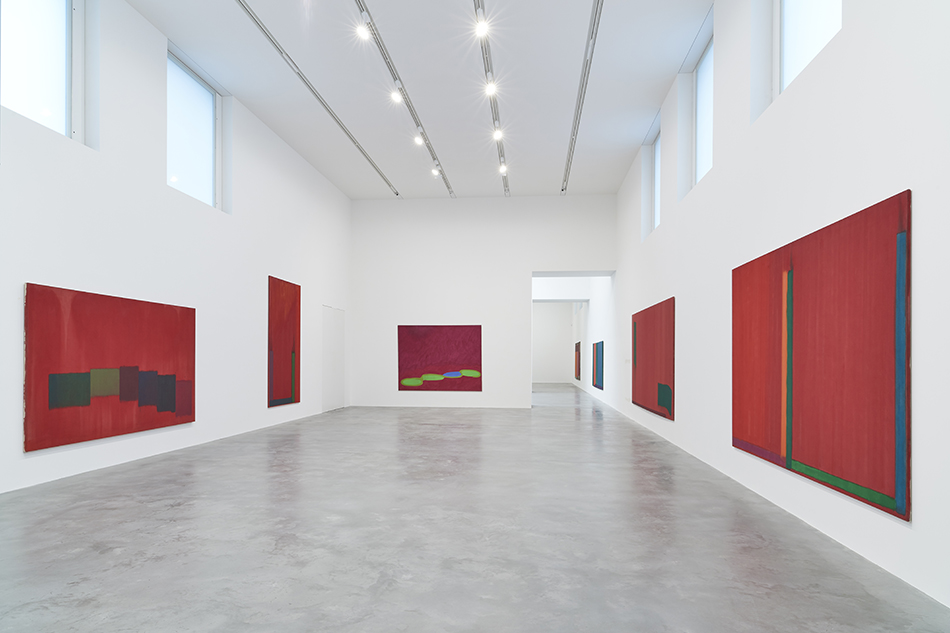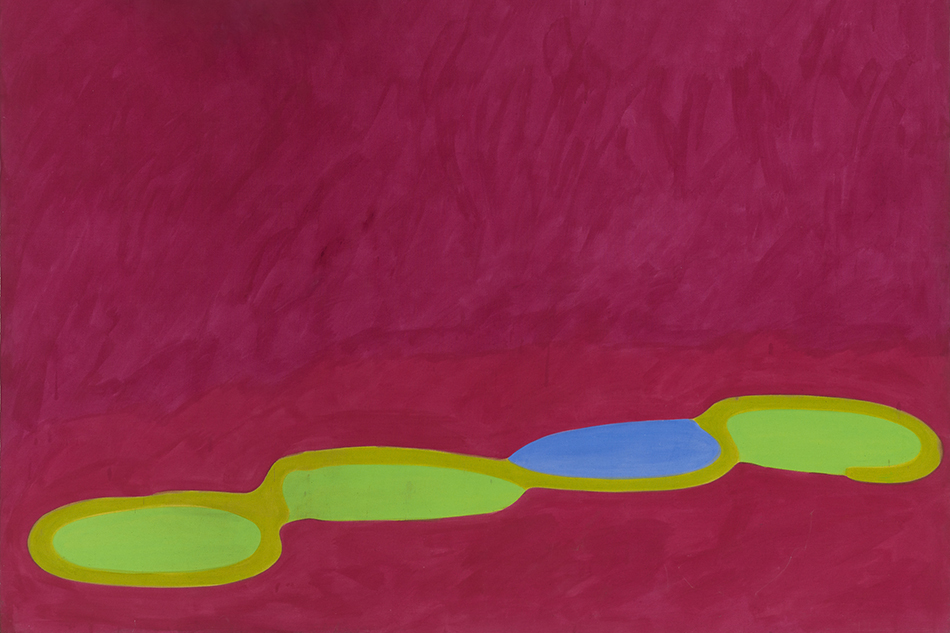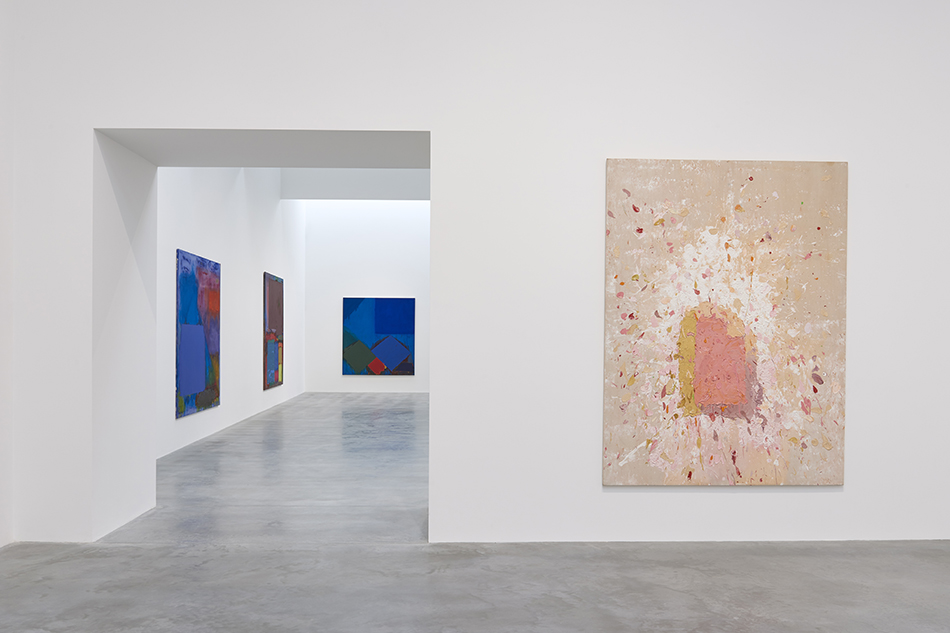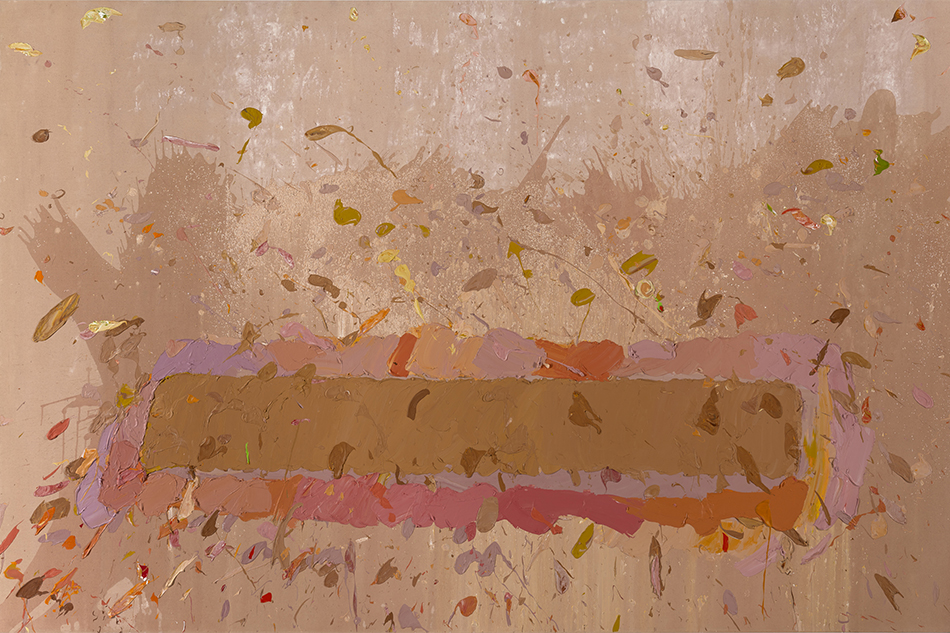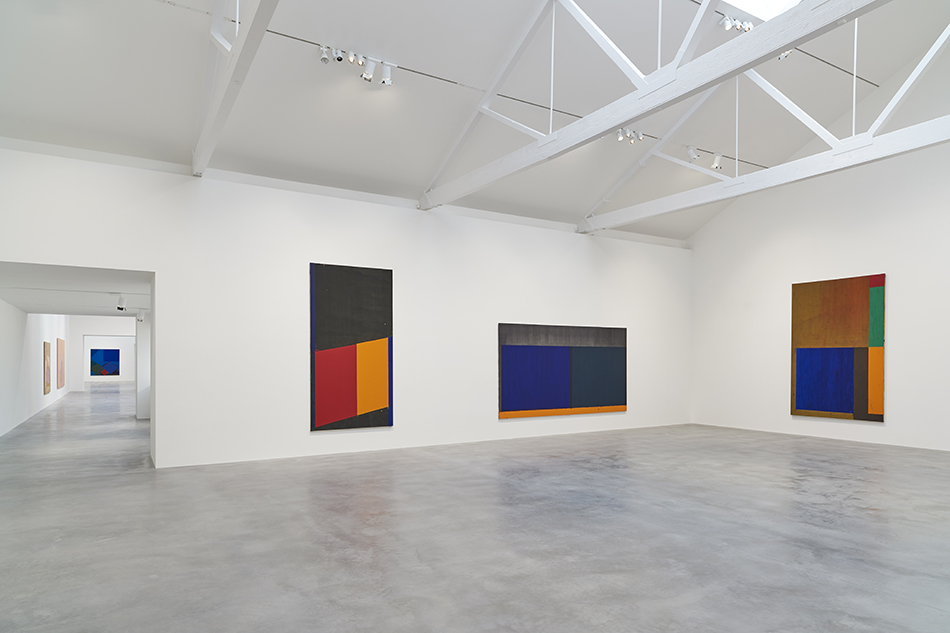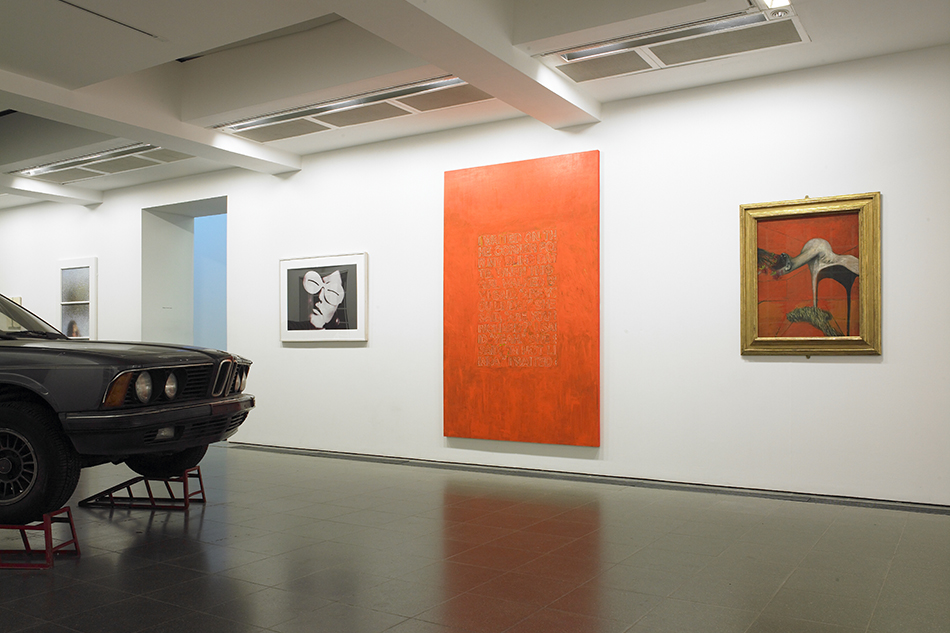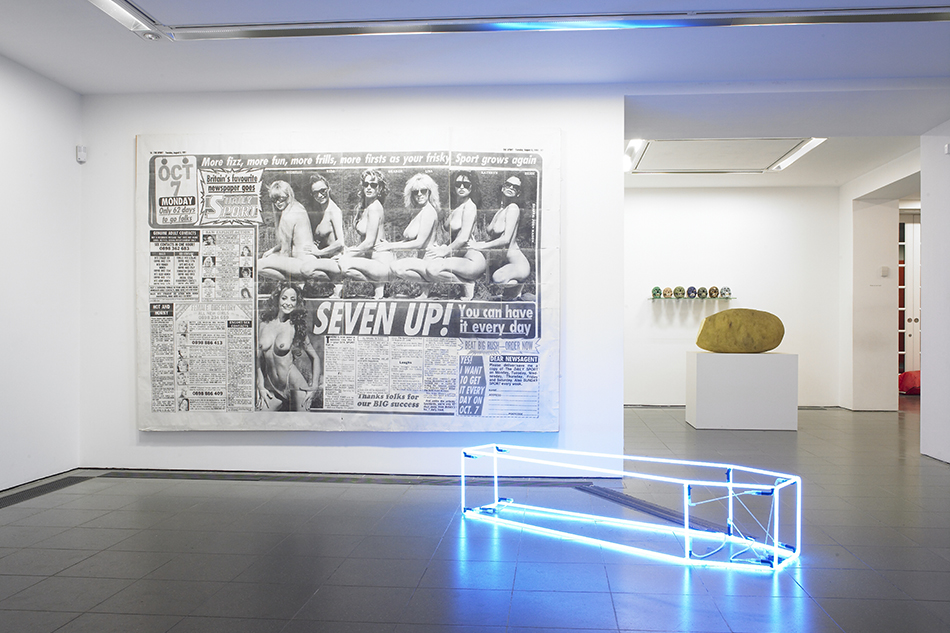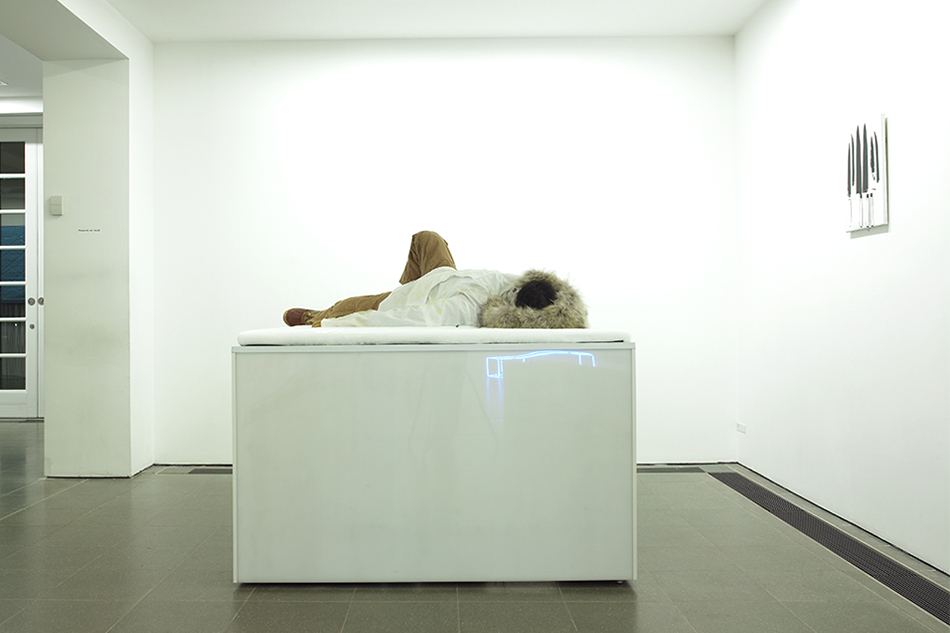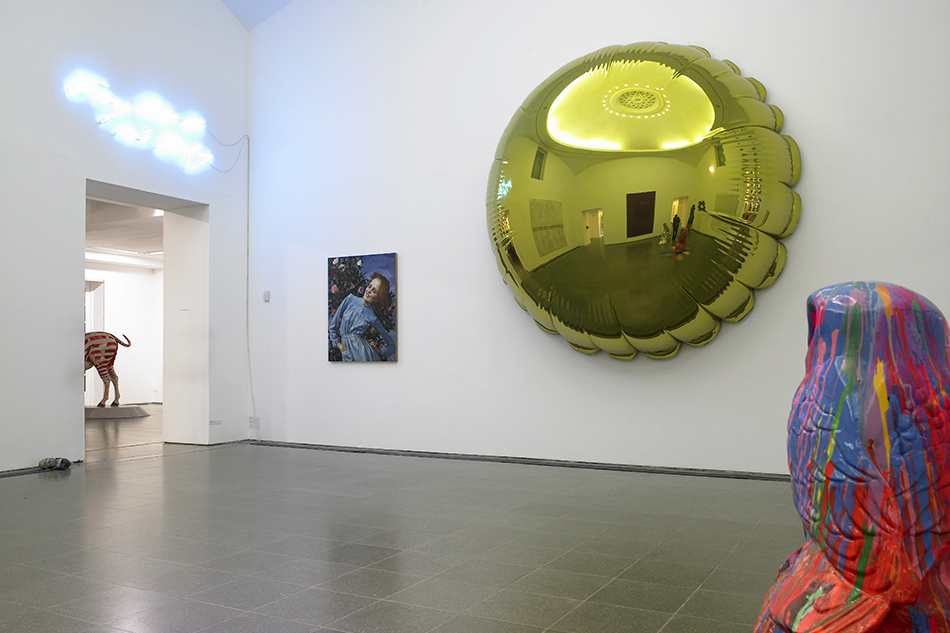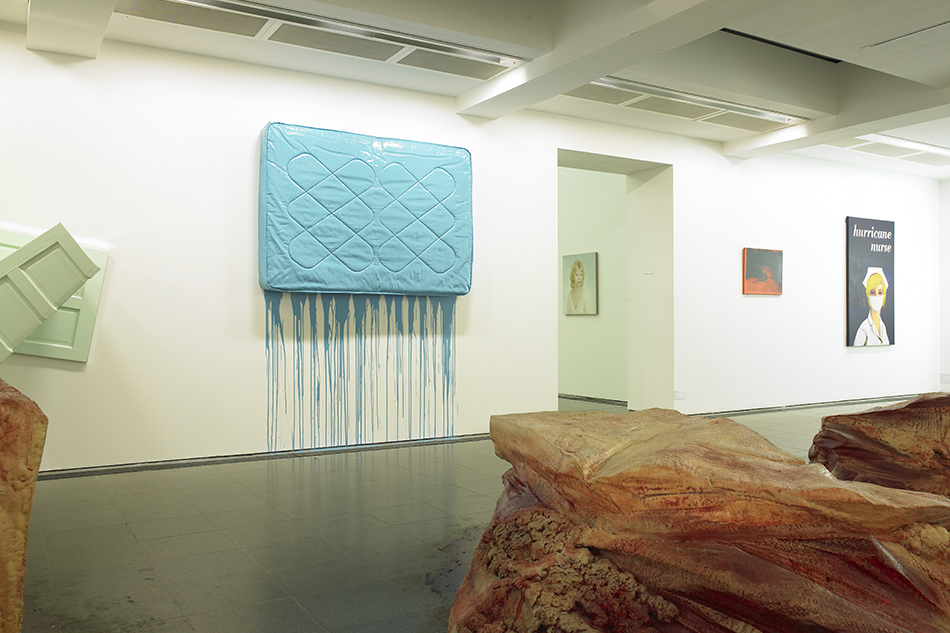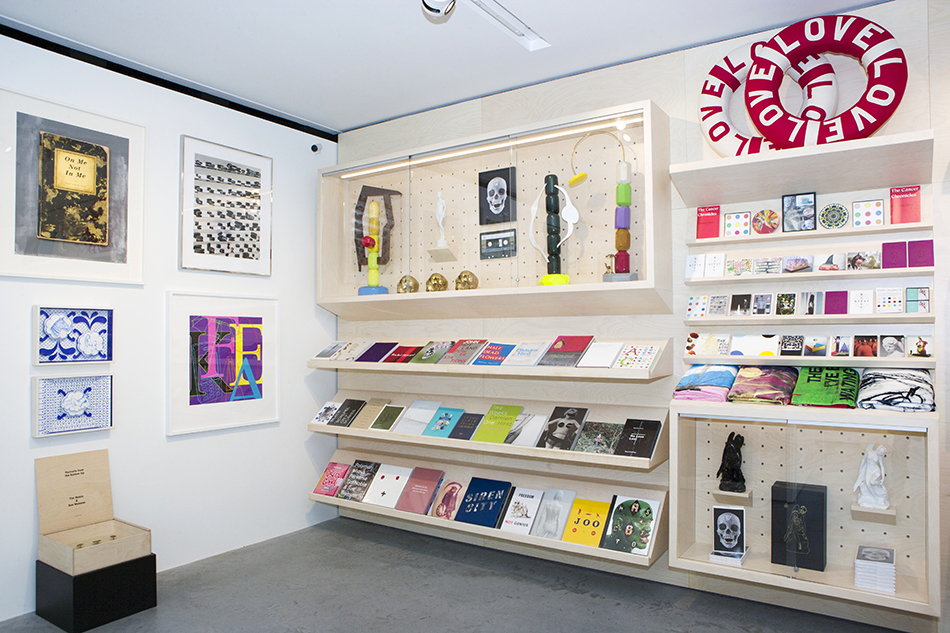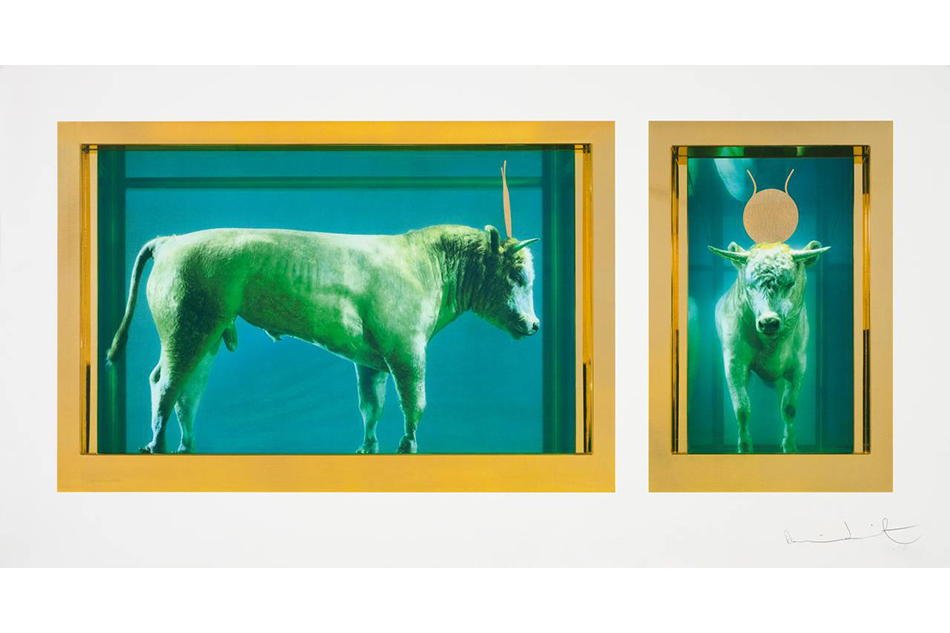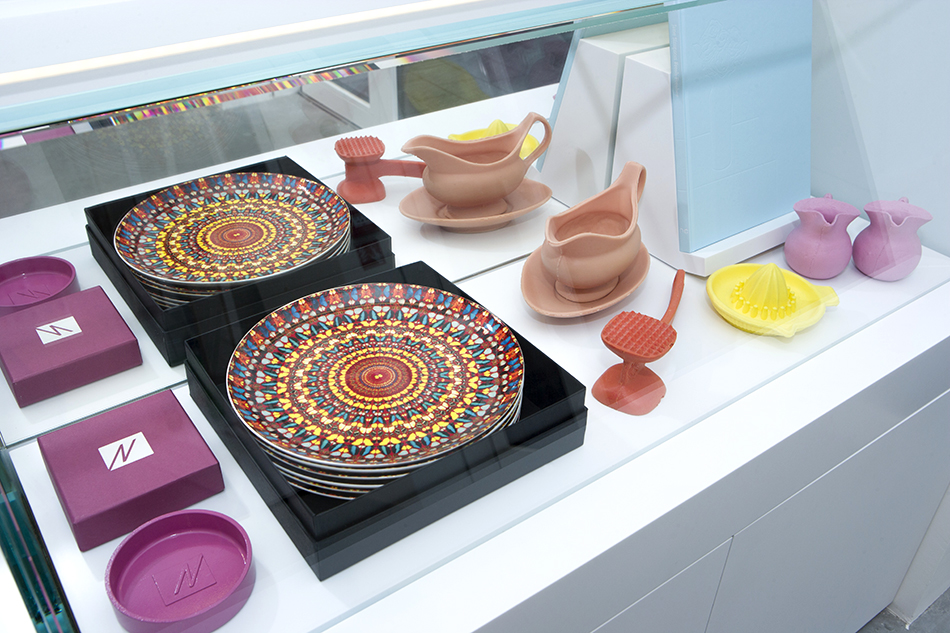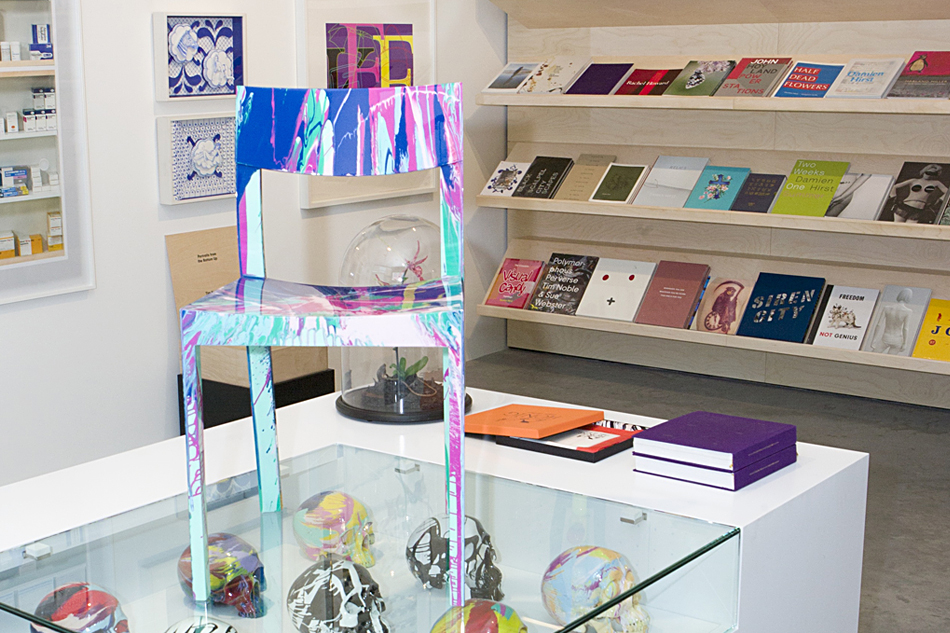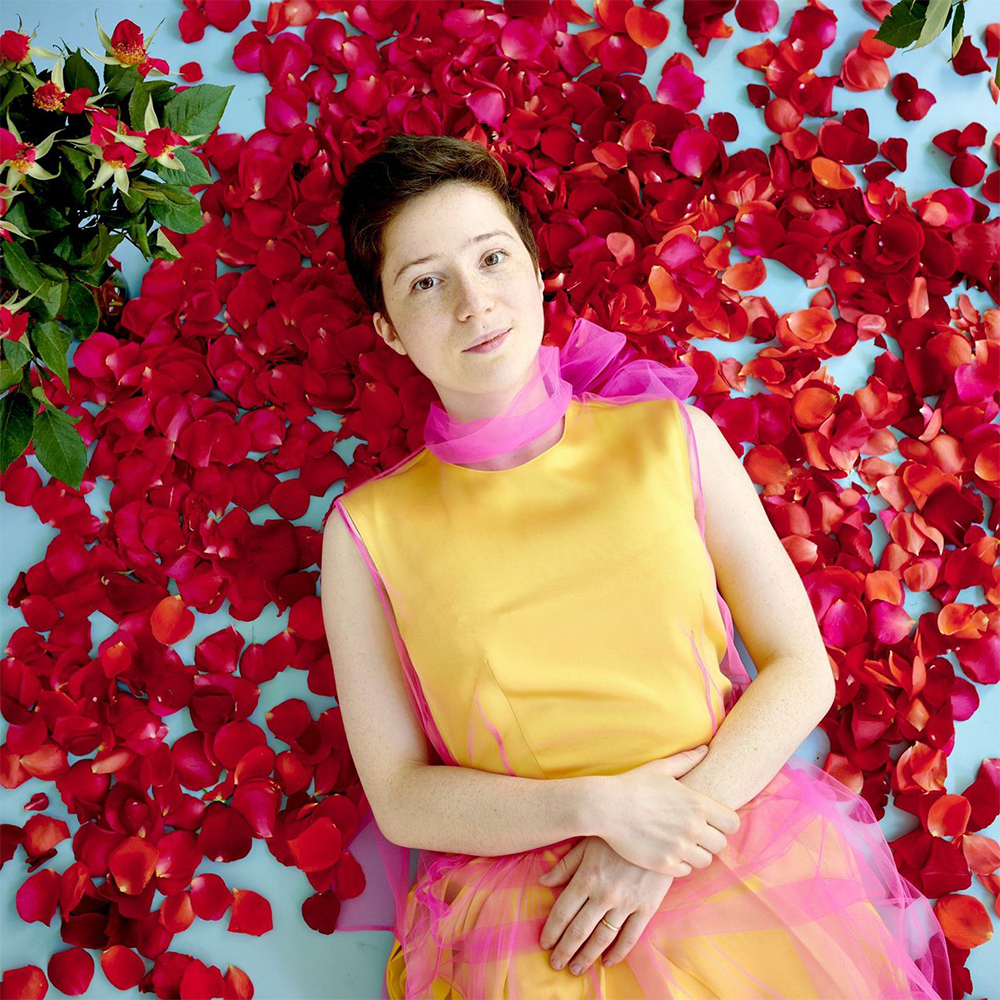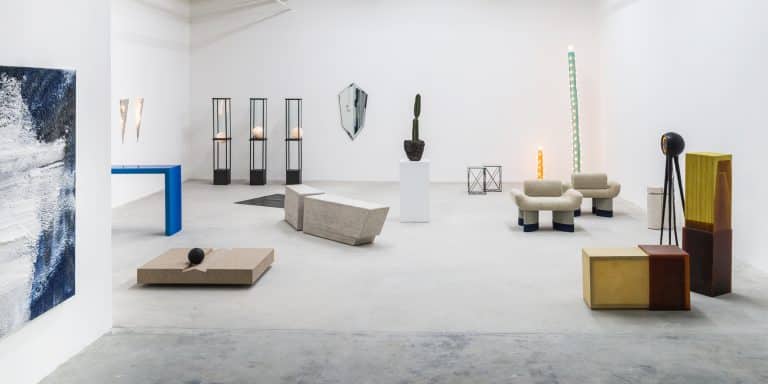
November 2, 2015The erstwhile Young British Artist Damien Hirst recently inaugurated his Newport Street Gallery, a free-admission London museum dedicated to his vast and varied collection of art and artifacts. (Portrait © Anton Corbijn) Top: a view of the brick façade of the Newport Street Gallery, designed by Caruso St. John Architects. Photo © Victor Mara Ltd, Photo Prudence Cuming
Damien Hirst might have been expected to open his new gallery last month with a show of his own attention-grabbing artworks, from sharks pickled in formaldehyde to diamond-encrusted skulls. Instead, the onetime hell-raiser inaugurated the elegant space in South London with an exhibition of paintings by the little-known British abstractionist John Hoyland (1934–2011).
Hoyland’s exuberant canvases, with their floating geometric shapes, are part of Hirst’s diverse holdings of art and artifacts by other creators, which he calls the “murderme collection.” (This play on the term “murder me” would seem to reflect his macabre tastes and sense of humor, evidenced in the skull, knife and death motifs seen throughout his work.) Hirst plans to give the public free access to much of the 3,000-strong collection — encompassing Pablo Picasso, Francis Bacon, Jeff Koons, Andy Warhol, Banksy and fellow Young British Artists (YBAs) such as Mat Collishaw, Tracey Emin and Sarah Lucas — in his Newport Street Gallery in Vauxhall.
“I believe art should be experienced by as many people as possible, and I’ve felt guilty owning work that is stored away in boxes where no one can see it,” Hirst wrote in a press release. (He declined to give interviews around Newport Street’s opening.)
Hirst initially came to the attention of the art world for his curating skills, bursting onto the scene with the now legendary exhibition “Freeze,” which he organized precociously in 1988, while still a student at Goldsmiths College, in a derelict southeast London dock warehouse. But what earned him notoriety were his in-your-face artworks, such as a dead cow’s head and flies and a menagerie of sliced up animals, as well as his rock-and-roll lifestyle of boozing, drug taking and exhibitionism.

The Newport Street Gallery before (top) and during (bottom) its construction. © Victor Mara Ltd.
With Newport Street, Hirst returns to his curating roots. For the current exhibition, titled “Power Stations,” he focuses on 33 of Hoyland’s early works made between 1964 and 1982, which Hirst described in a 2009 conversation with the older artist (republished in the show’s catalogue) as “paintings that give you a slap, a physical, gut reaction to some sort of . . . hugely emotive, transcendental thing.”
Hoyland’s outsize canvases, up to 7 by 12 feet in size, appear custom made for the soaring 37,000-square-foot museum, which occupies three Victorian buildings that had been employed for painting West End theater sets. Hirst bought the first of these structures in 2002 and used it as a studio, but within a few years he was already considering grander schemes for the space.
He hired local firm Caruso St. John Architects, also responsible for Gagosian Gallery’s new Mayfair branch and a remodeling of Tate Britain, to design the gallery at a cost of nearly $40 million, with the addition of two new buildings. The exterior presents a jagged wall of redbrick stretching half a block, while inside stark white walls extend upward to exposed whitewashed rafters. The only decorative flourish to interrupt this austerity is provided by spiral wooden staircases bookending the six exhibition spaces.
“One word could be used to describe the brief, and that’s flexibility,” explains Hugh Allan, senior curator of the gallery. “The architects managed to deliver a sensitive conversion and maximized the light, space and access in a beautifully understated way.” Allan, who has been Hirst’s friend since their schooldays in the northern English town of Leeds, also co-directs the artist’s production company, Science, and is one of the founders of Other Criteria, his publishing, retailing and merchandising empire, which has a shop inside the museum, another in Devon and a third in New York City (as well as a 1stdibs storefront).

Hirst (left) posed with John Hoyland in front of one of Hoyland’s grand expressionistic canvases in 2009. Photo by Jillian Edelstein, Camera Press London
Hirst’s admiration for Hoyland makes sense, given his fondness for color — evident in his multihued “spot” and “spin” paintings — and for the spectacular, plus his own struggle to master paint. Critics savaged a show of Hirst’s canvases at the Wallace Collection in London in 2009, which was also the year the two artists met. Since Hirst began accumulating what is probably the world’s biggest collection of Hoyland’s work, the artist’s currency has risen. Pace Gallery recently took on the estate.
“Damien first encountered Hoyland’s work as a student more than thirty years ago in Leeds and always thought of him as a great painter,” says Allan, adding that Hirst believes that Hoyland was “overlooked in his later years and deserved to be reevaluated.”
Hirst and Allan are revealing few details about Newport Street’s upcoming program beyond the fact that exhibitions will run for four to six months and won’t include the artist’s own work. Indeed, the only traces of Hirst’s art in the entire museum are in the Other Criteria shop, which sells Hirst merchandise, books and limited-edition artworks by various artists, and in the restaurant, Pharmacy2, a version of his popular 1990s eatery that is due to open next year. Once a magnet for such A-listers as Madonna and Kate Moss and kitted out with Hirst-designed pill-shaped barstools and his trademark medicine cabinets, the original Pharmacy folded in 2003, and Hirst auctioned all its contents, down to the ashtrays, through Sotheby’s, raising $17 million.
Hirst has long spread his energies beyond his art. Besides his museum, restaurants and stores, he owns a 300-room Gothic manor in Gloucestershire, a grand Regency-style house in London (whose basement he is converting into a vast storage space for his art collection, according to the Daily Telegraph) and properties in Mexico and Thailand. Selections from the murderme collection have previously been exhibited in such far-flung institutions as the Serpentine Galleries in London, the Pinacoteca Giovanni e Marella Agnelli in Turin and the Multimedia Art Museum in Moscow.

Hirst’s For the Love of God, 2012, lenticular 3-D print
Commentators have welcomed Newport Street, anticipating that it will spearhead a regeneration of the impoverished area south of the Thames. The Cabinet Gallery is already set to move next spring into a five-story home on the site of the former Vauxhaull Pleasure Gardens.
Some have speculated that Hirst’s new venture is intended to boost his profile and the prices for his works, which have mostly flagged since 2008, when he bypassed his established dealers and sold more than 200 works at auction for $170 million. His office insists, however, that the gallery is a philanthropic enterprise. With an estimated fortune of $330 million (according to this year’s “Sunday Times Rich List”), Hirst should have no trouble financing it from other parts of his business.
Perhaps, having turned 50 this year, Hirst is thinking about his legacy. He has acknowledged the profound influence of Brit Art patron Charles Saatchi’s north London gallery in a converted paint factory, which he and other budding artists frequented in the 1980s. Hirst hopes, says Allan, that students will find his nonprofit space similarly inspirational.
Newport Street’s opening was attended by art-world grandees like Tate director Nicholas Serota, White Cube owner Jay Jopling and such artists as Michael Craig-Martin (Hirst’s mentor), Sue Webster, Michael Joo and Gavin Turk. Two packed bars served sumptuous fruit cocktails, but Hirst, now a teetotaler, was a no-show.
Hirst’s absence marked a departure from his hard-partying days, but his love of art remains a constant. “One of the things that has been difficult for him . . . is keeping himself challenged,” notes Craig-Martin. “He’s a risk taker. All the things he’s done have been giant risks. Most of them have been extraordinarily, unspeakably successful.”

